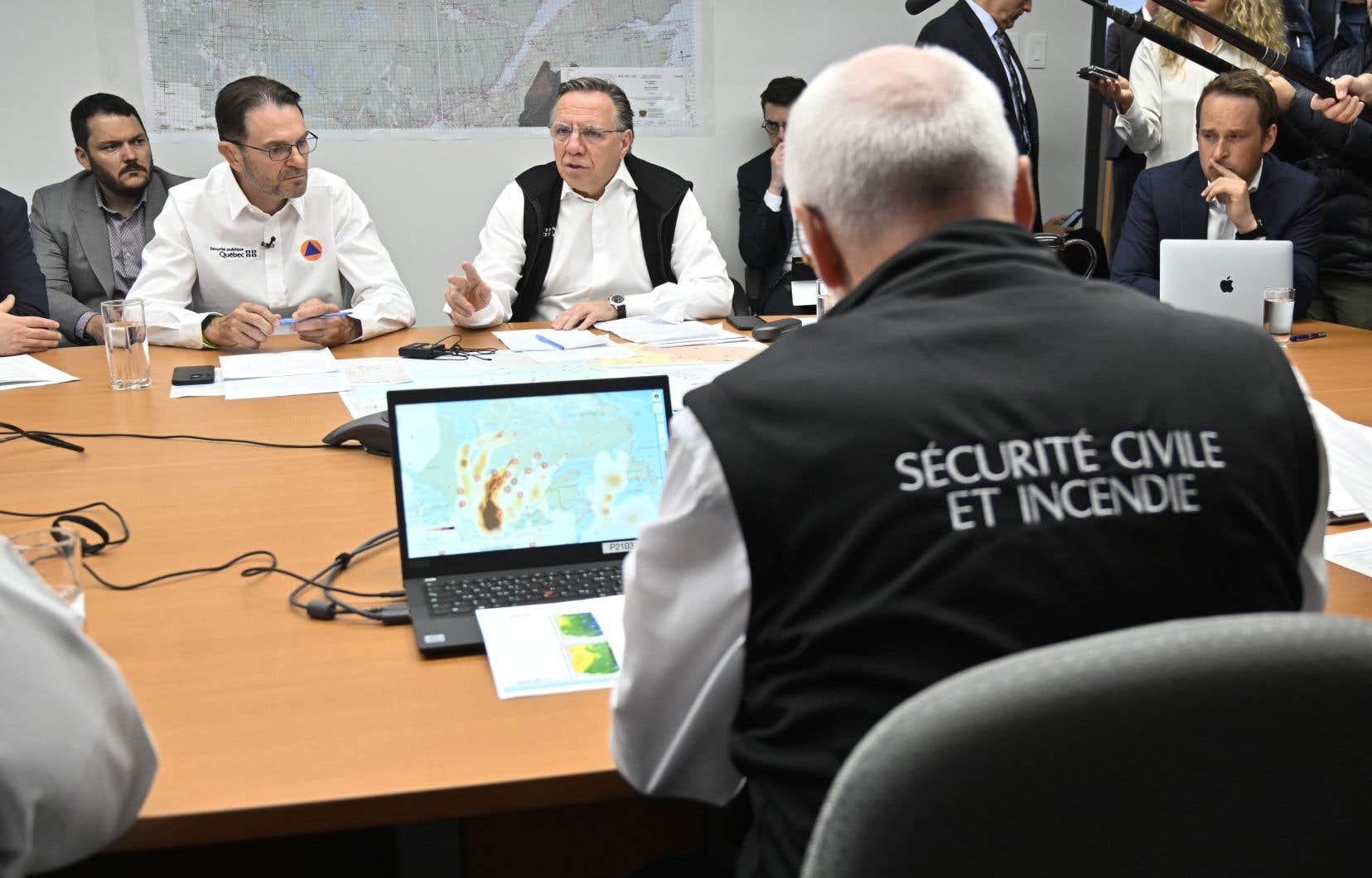Quebec could lack tanker pilots within a week to fight the forest fires, which will soon have more than 15,000 evacuees.
“The more time goes on, the more challenges there will be for the pilots and mechanics,” Prime Minister François Legault said Wednesday morning.
He recalled that the pilots must rest after a certain number of hours of flight, and that the devices must be inspected. “There is currently no shortage of drivers, but after a week, there will indeed be challenges,” he warned.
The head of government took stock of the forest fires raging in Quebec. The situation has resolved on the North Shore, but Mr. Legault remains concerned about Nord-du-Québec and Abitibi, where the city of Senneterre has begun to be evacuated.
In total, 11,400 people had to leave their homes, “but we are thinking of adding 4,000 more” by evacuating the Cree community of Mistissini, in Nord-du-Québec, declared the Prime Minister. Quebec is also keeping an eye on the town of Chapais, where teams are working on an evacuation plan to Saint-Félicien.
“For the moment, we do not expect significant rain before next Monday evening,” said Mr. Legault. He therefore said that it was better to be “realistic” and not to consider returning home, for the evacuees, for at least “five or six days”.
Alongside the Prime Minister, the director of the provincial center for the protection of forests against fire (SOPFEU), Luc Dugas, declared that he had never experienced such a situation in his 23-year career. The fires have so far ravaged 460,000 hectares of forest.
“In the history of SOPFEU – in the last 50 years – the worst year, we have passed it at this time,” underlined the Minister of Natural Resources and Forests, Maïté Blanchette Vézina. “This is a situation we have never seen. »
Lack of arms
In an exchange with the Prime Minister, Luc Dugas of SOPFEU expressed concern about a lack of human resources to fight the fires.
“In the short term, it’s going well, but in the long term, it’s going to be problematic because they [les pilotes] will reach their maximum time on duty. The government air service has failed to recruit the full set of pilots required for its mission,” he said.
However, even in the private sector, pilots, “there are not tons of them”, recognized Mr. Legault. For the moment, 11 of SOPFEU’s 13 air tankers are in operation. A Yellowknife company provided two other aircraft, while an American company loaned four.
On land, SOPFEU has 520 employees “That’s 520 ‘capped boots’ in the field,” summarized Mr. Dugas. There are also 150 soldiers in the forest.
With the help of New Brunswick, France, the United States, Portugal, Spain and Mexico, the government would like to increase this number to 1,200 people, said Mr. Legault.
“With the current staff, we can cover about 40 fires, but there are 150,” he recalled.
The Prime Minister also announced that his government is working on a financial compensation program for evacuees. The goal, he said, is to “cover any extraordinary expenses you’ve had.”
He also said he was following the work of Public Health on air quality. “What we are told is that the risks are limited, but people who have lung problems, asthma problems, are better off staying at home with the windows closed,” he said. he declares.
Ottawa ready to help
Federal Defense Minister Anita Anand said Wednesday that her government stands ready to send other soldiers, including airplane pilots, if Quebec so requests.
“We have a capability here in Canada. We continue to review these opportunities to assist with our Forces [armées pour] forest fires,” she said at a press briefing.
About 300 soldiers are also dispatched to the North Shore, in particular to ensure logistics and the delivery of food to the population. A Naval Reserve ship, HMCS Jolliet, serves as the base of operations.
Prime Minister Justin Trudeau agreed that Canada is going to have to “think about how to equip itself for this new reality”, in which extreme weather events are likely to be more frequent and more costly.
With Boris Proulx
